Story Highlights
- Battle Royale games saw their rise to fame in the late 2010s with titles such as PUBG: Battlegrounds, Fortnite, Apex Legends, and Call of Duty: Warzone.
- The genre was surrounded by hype in its infant stages. Hype, by nature, is destined to fade but battle royale has succeeded in establishing itself within the gaming space.
- Cementing its place as a genre with prominent titles, it’s difficult for companies to break into the market without offering a compelling and engaging experience.
- Player metrics and overall trends show that the genre is in a fairly healthy state. Fluctuation can be observed due to content updates which may or may not lead to a gradual rise in players.
The battle royale genre’s meteoric rise to prominence in the late 2010s took the world by storm. Having carved a place for itself within the gaming industry, it became a cultural phenomenon. Echoes of that can still be felt today, yet the genre isn’t surrounded by the same degree of craze that it previously was. All things come to an end, but is the hype for battle royale games truly in the grave?
Origins of the battle royale genre are rooted in a 20th-century novel. Initially starting out as mods for other grand-scale online games, it picked up steam halfway through the decade. Many people consider Z1 Battle Royale to be the first actual title of the genre. However, it wasn’t until 2017 that we’d see players gravitate toward it in droves. Z1 may have come before but the genre took off with Krafton’s PUBG: Battlegrounds.
The line between establishing yourself and being a trend fueled by hype is thin yet obvious. Many things originate as trends and people hype them up. However, not all are able to make their mark and stick around. As a genre, battle royale started out as a hype-fueled trend, yet it managed to anchor itself. What started out as a raging outburst morphed into a consistently flowing river in a way.
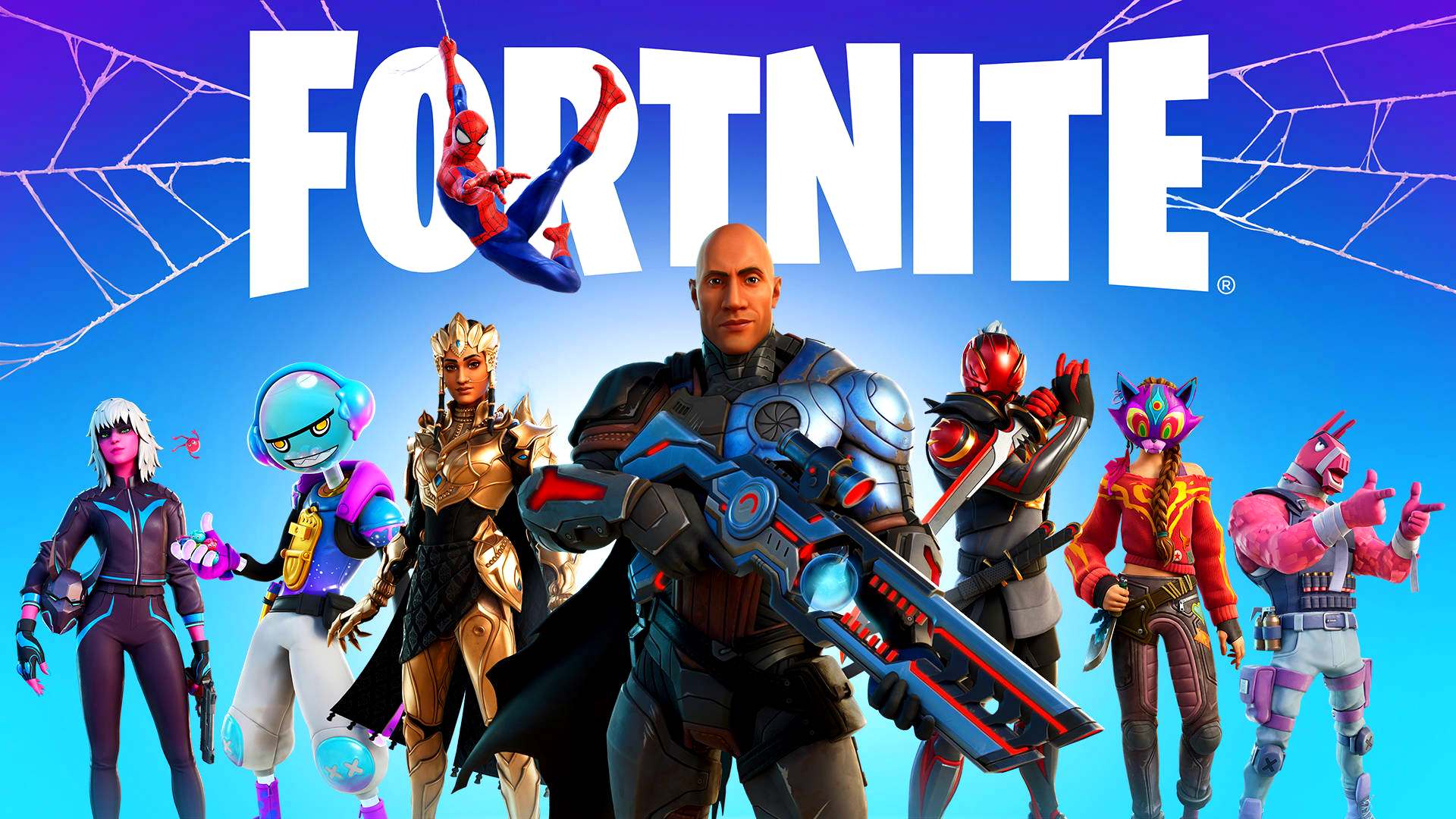
The Overall Relevancy Of Battle Royale
The purpose of this piece is to take a step back and look at this genre from as objective of a view as possible. The main regions I’ll be focusing on are North America, Europe, the UK, and Japan. All of the data cited comes from accessible sources such as Google Trends, Steam Charts, Twitch, etc. Values are ever-changing but the data provides a decent starting point.
Keep in mind that most of this will be restricted to PC as other platforms like Xbox and PlayStation rarely, if ever, disclose player data. However, Steam‘s API allows us to track these numbers on the platform with a fairly high degree of accuracy. The battle royale space is saturated so the focus will be on the four behemoths—PUBG Battlegrounds, Fortnite, Apex Legends, and Call of Duty: Warzone.
Anyone looking from the outside in would know that the genre is still fairly relevant. This is due to the success of the four behemoths. However, interest in things tends to dwindle over time. The general pattern is that interest is built up steadily until release when it reaches the peak. A recent example of this would be Capcom‘s remake of Resident Evil 4. Steadily built over time with each reveal, the interest spiked at launch and the numbers are proof.
After launch, however, said interest starts to gradually decrease before stabilizing. This is the natural flow of things. Revealing additional content such as free updates or DLC spikes this interest which follows another steady build-up until launch. The cycle keeps on looping and provides the most optimal growth environment for battle royale and other live-service video games.
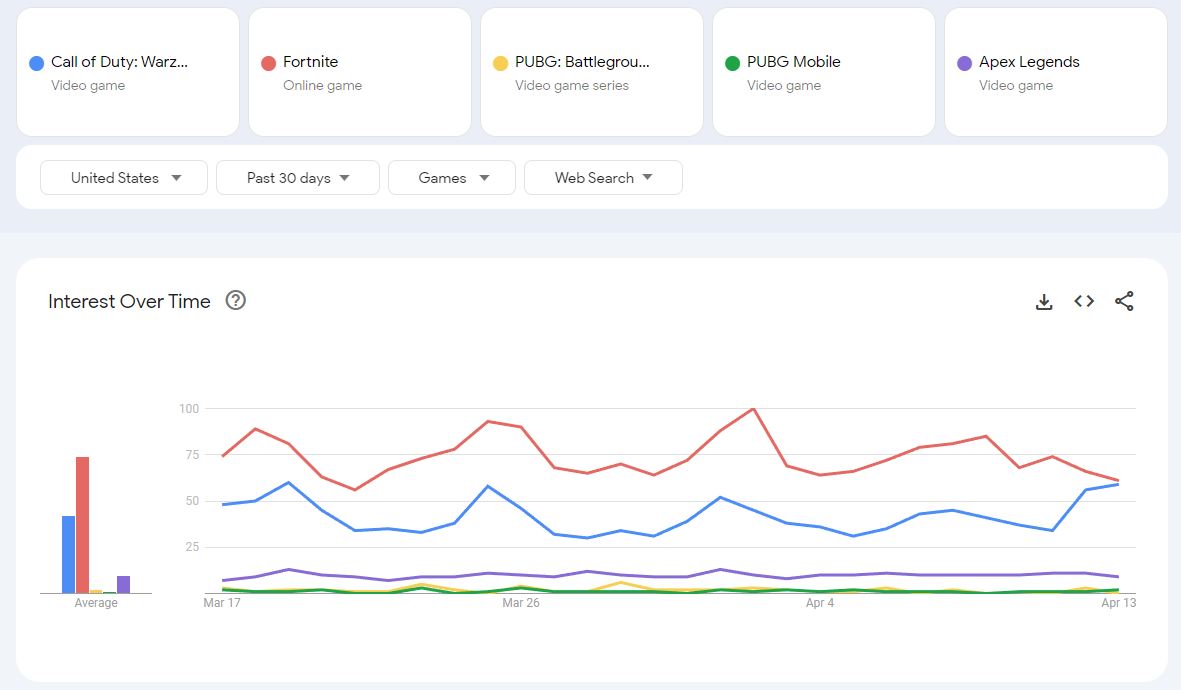
Last month on March 23, Fortnite saw the launch of Creative 2.0. Based on Google Trends data for the past 30 days, Fortnite saw a sizeable spike in search relevancy across the board. Increasing the time range results in more streamlined data. However, for now, Creative 2.0 is the most recent update for Fortnite which makes it a relevant point of interest.
Based on the graph, search relevance started to pick up near the launch of the update, and reached its peak on March 25, just two days after the release. After a gradual decline, it spiked on April 2 after which it stabilized. This pattern can be seen in the other three regions as well. However, Japan is a bit of an exception considering the general popularity battle between Apex Legends and Fortnite based on Google Trends.
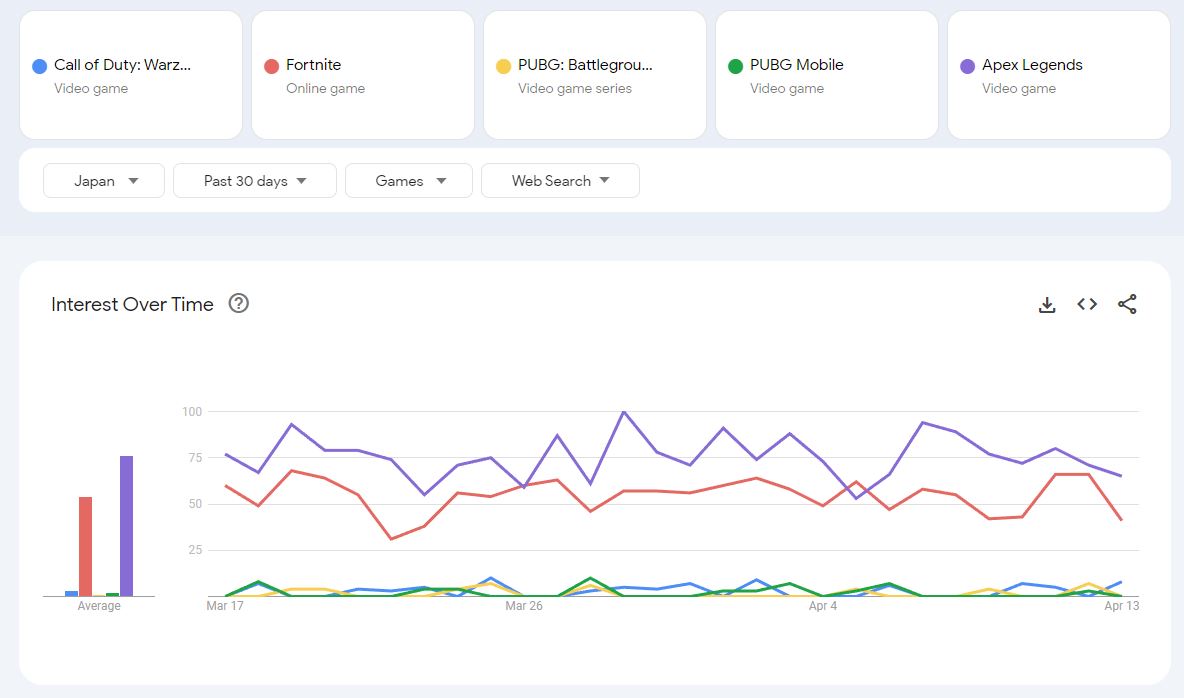
When it comes to search relevance within the last 12 months in the United States, Call of Duty: Warzone and Fortnite are in the lead. Note that this isn’t the player count in question, only the search frequency. Player count metrics are a different avenue of discussion which I’ll get to later. Furthermore, a strikingly similar pattern can be observed in the UK and several countries within the EU.
The exception to this, however, is Japan. While the pattern may have similarities, the difference here is that Warzone isn’t quite relevant in the region. The leading titles are Fortnite and Apex Legends with the latter being at a much higher position on average. You can go back as far as January 1, 2020, and the patterns won’t change. Content updates and certain factors may result in spikes but this is a normal occurrence.
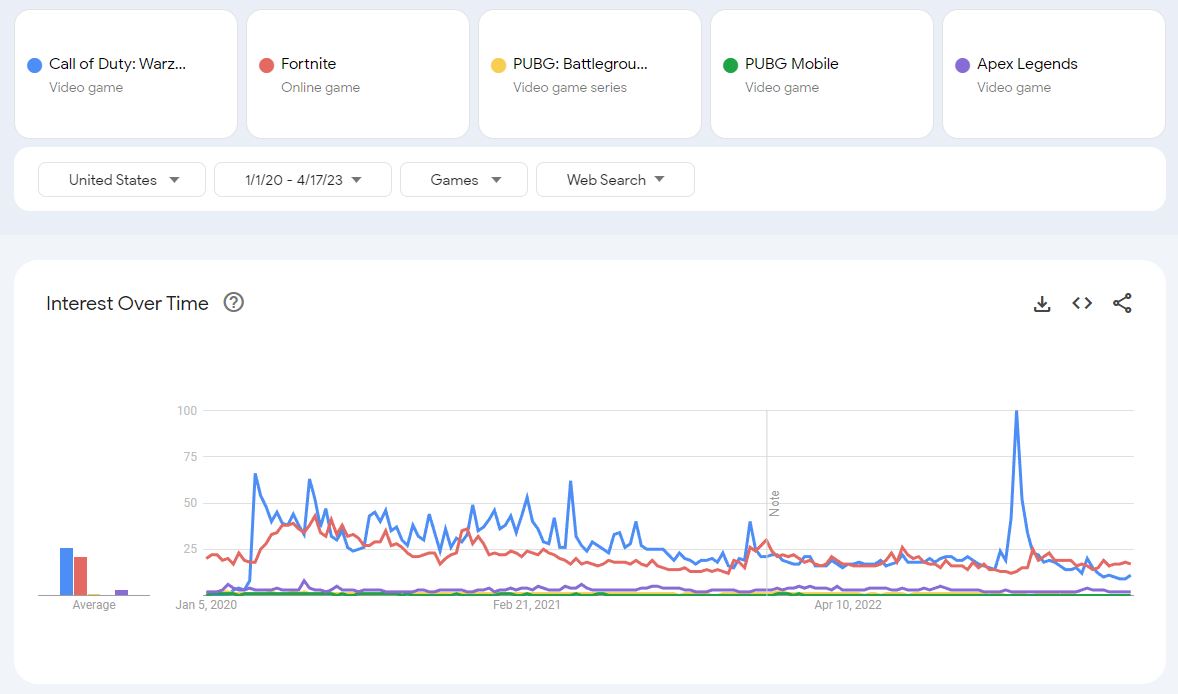
Looking at Google Trends alone, battle royale games aren’t exactly dead but search relevancy has discrepancies. Competition tends to be between two out of the four prominent titles with Fortnite showing a higher level of overall consistency. Hype tends to affect a game due to fresh content and this is prevalent in live-service games due to their nature.
Looking at the overall buzz surrounding the genre, however, one can say it’s not quite as impactful as it used to be. Even so, that doesn’t reflect its standing as an established genre.
Battle Royale Is No Longer A Trend & That’s A Good Thing
Trends come and go but sometimes they just stick around. battle royale started as one and every new trend is surrounded by the buzz factor. With the release of games like PUBG: Battlegrounds, Fortnite, Apex Legends, and Warzone, the genre established itself. Communities began to form and the momentum elevated these games from being a product of a trend to something more concrete.
Players are drawn to games due to a variety of factors. This includes certain shady elements which gacha games are a huge offender of. However, it’s also about simply making a good game. A straightforward, enjoyable experience would bring in more players than an overly complex system with intricacies that even the developers can’t explain. It’s called bad game design.
Battle Royale, as a genre, has an identity now. When people hear that term, they think of certain games. These games are held as a benchmark or a default standard of comparison. In order for companies to set foot within this space, they would have to compete with names like Fortnite, Call of Duty, PUBG, and Apex Legends. These are games with a gargantuan playerbase and a concrete presence overall.
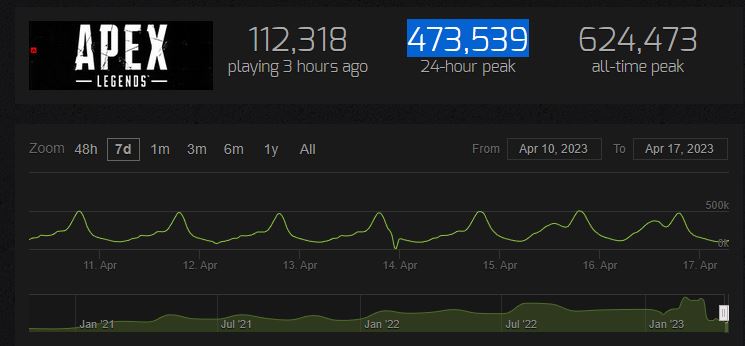
It’s not just about bringing in new players, it’s about appealing to those who are already here. However, that can be too tall of an order. The issue is the product and the experience. Companies need to provide something that’s compelling enough to get the players’ attention and engaging enough to keep them coming back for more. It’s the reason why recent battle royale games have failed to perform and end up going down quickly.
Data from Steam Charts shows that PUBG: Battlegrounds averages around 200,000 players every month, give or take. In addition, its 24-hour peak is currently at 428,565 with an all-time peak at a staggering 3,236,027. Similarly, Apex Legends is sitting at a 24-hour peak of 473,539 with a monthly average of 244,608 within the last 30 days.
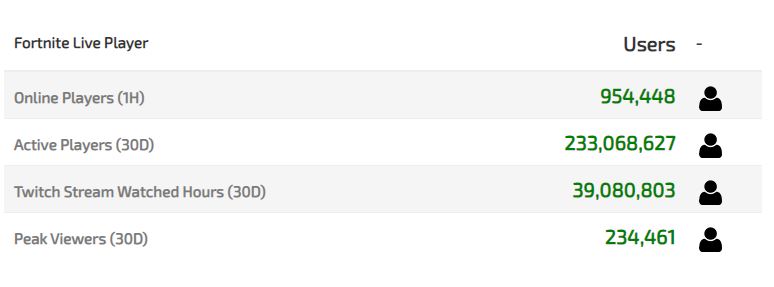
Mind you, these are numbers for the PC platform, Steam in particular. PUBG: Battlegrounds is also available on Epic Games Store and then you have the console playerbase to think about. In the numbers department, Fortnite continues to hit it out of the part. According to Active Player, Fortnite has had 233,068,627 active players in the last 30 days.
Granted, these numbers can be a bit shady but when you look at other metrics such as Twitch, it’s easy to make an educated guess. Fortnite has over 85 million followers on Twitch and even during downtime hours, it averages around 60,000-90,000 viewers. Apex Legends has over 15 million followers while PUBG: Battlegrounds and Warzone have over 35 million and 19 million followers respectively.
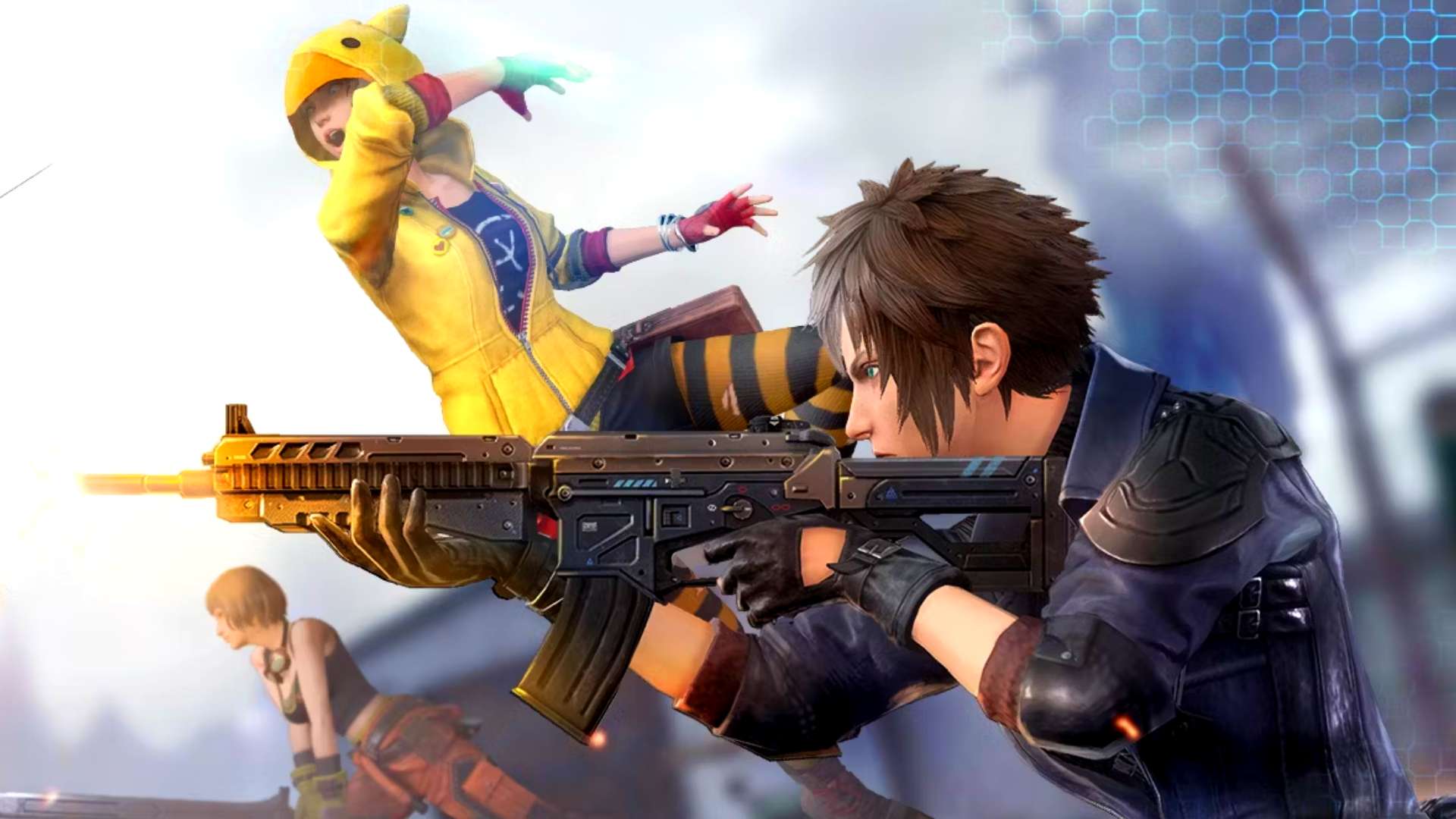
The point is that these games are established icons of the battle royale genre. If you’re unable to provide an experience compelling and engaging enough to compete with such icons, your game is most likely going to fail, especially if it’s an obvious cash grab. The failure of Final Fantasy VII: The First Soldier is a prime example.
Fortnite Is A Master Of Live Events And More
Nothing is without flaws and the same goes for Fortnite. I’ve previously talked about Dark Patterns in gaming and how they’re basically designed to enforce certain behavior. Mutahar from SomeOrdinaryGamers has made a pretty good video on this that you should watch if you’re interested in learning more. However, this doesn’t negate the achievements of Fortnite as a game.
The quality of these live events in the game is simply amazing. It’s content like this, content that is not just surface-level but has some substance to it, that brings in players and keeps them engaged. It’s called making something that’s good, a concept that is seldom understood in modern times. Another thing under Fortnite’s belt is the number of collaborations to date.
Ever thought you’d wake up one day and see Goku, Vegeta, The Rock, Geralt of Rivia, and Spider-Man in one game? Well, Fortnite managed to pull it off. And what’s shocking is that they managed to do it right. Remember how Spider-Man was in Square Enix‘s live-service Avengers game? Well, it ended up shutting down but that doesn’t prevent us from gazing at the tragic quality of the game.
If you’ve been on the internet for a while, you’d know that Fortnite gets a lot of hate for a whole bunch of things that don’t even make sense at times. However, you just can’t refute the fact that its content is designed with passion.
Battle Royale & Its Nature As A PVP Game
The main attraction of battle royale games is the scale of player-versus-player action. You have 100 people just duking it out against each other and the last man standing comes out on top. Add a whole bunch of unique systems and gameplay elements to the mix and you have a hit. However, at its core, this is still a straightforward PVP experience.
Fighting games are a solid example. They are niche in comparison to some of the other titles in the market. This is due to their entry barriers, learning curve, and skill ceiling. Games like Tekken, Street Fighter, Dragon Ball FighterZ, Mortal Combat, and Guilty Gear are all examples of this.
Tekken’s lack of proper in-game tutorials further exacerbates the problem. Such things tend to contribute a little to the genre’s niche status on top of being a PVP game. It’s a bit reassuring to see some of the changes Tekken 8 is implementing to alleviate this problem and make the game more accessible.
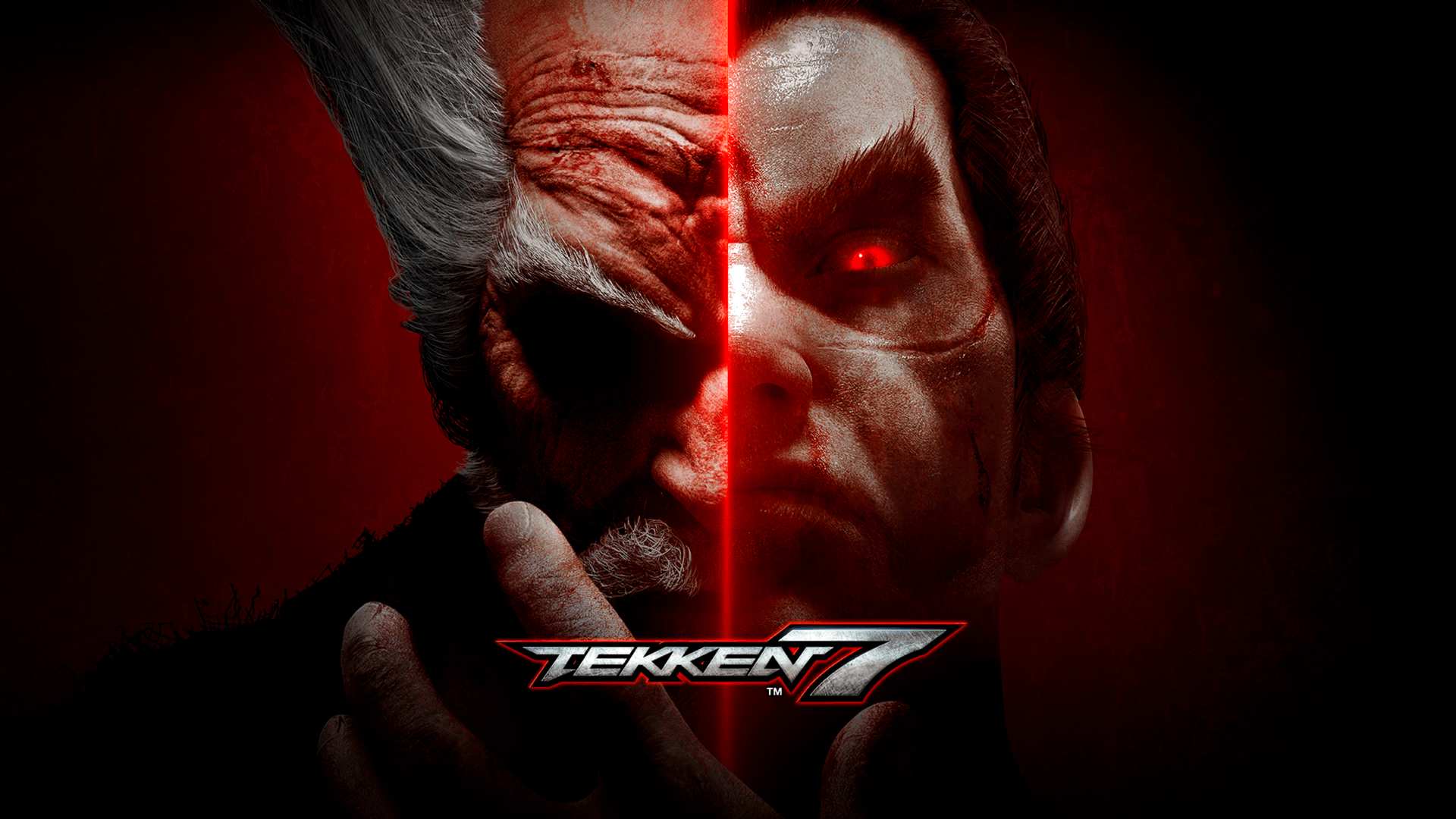
Battle Royale, on the other hand, is a different kind of PVP. One can make the argument that it is more accessible due to most games having shooter-style systems and that argument would be valid. At the end of the day, while skill is involved in almost anything you do, battle royale games are easier to get into and fun for the average player.
In addition, they provide enough value to someone who wishes to get better at the game. I believe it’s this element that has elevated the genre and allowed it to cement itself within the gaming space.
The State Of Battle Royale & Its Future
The truth of the matter is that hype eventually fades and what’s left after that is just quality. Make a good game and it will last. As I stated earlier, battle royale started off as a trend and was fueled by hype. The reason why some of these games are still very much alive is that they’re worth playing. The genre is established, recognized, and has iconic names that companies have to compete against in order to break into the market.
Competition breeds excellence and that’s true. Not all titles will survive and while some may succeed in holding on to that thread, they may not reach the heights of games like Fortnite for example. In the end, the hype for battle royale is a thing of the past. Not because the genre is dead, but because it’s cemented its place and these games have dedicated communities.
As long as these elements are present and developers continue to make great games, the genre will thrive. It’s definitely not an easy task when you consider the modern ecosystem of gaming but it’s not impossible. As for what will happen to battle royale in the future, that’s something only time will tell.
Was this article helpful?
Thanks! Do share your feedback with us. ⚡
How could we improve this post? Please Help us. ✍












